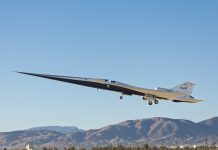US President Donald Trump has repeatedly mentioned the “Indo-Pacific” Region and the strategy around it, while the global community wonders if it is a geopolitical strategy or a geoeconomic one? In June, US Defense Secretary James Mattis used “Indo-Pacific Strategy” where the US intends to build a geopolitical military alliance than an economic alliance in the Indo-Pacific region, which may fail with countries like India according to Chinese Global Times.
- Has Japan Started to Support China’s OBOR Proactively?
- Will Africa be the Battleground or Hub for India-China Collaboration?
US Secretary of State Mike Pompeo presented a speech – America’s Indo-Pacific Economic Vision – at the Indo-Pacific Business Forum on July 30, expressing that the US’ Indo-Pacific strategy has not only geopolitical ambitions but also geoeconomic partnership designs.
While the geopolitical implication of the policy may lead to regional anxieties and frictions and thus put nations in the region on alert, the geoeconomic theory will promote regional economic development.
In the speech, Pompeo simplified the geographical range of the Indo-Pacific strategy and emphasised on India’s position. He defined the Indo-Pacific for the first time in over a year as extending “from the United States west coast to the west coast of India,” essentially the previous Asia-Pacific Region in addition to India, Bangladesh, Sri Lanka and the Maldives.
As the US has close economic and defence ties with the nations of Asia-Pacific, substituting it with the Indo-Pacific indicates that the US admires both India’s significance and prospects.
That demonstrates why India was designated as a Strategic Trade Authorization-1 (STA-1) country, which “acknowledges the US-India defence and economic relationship” and is comparable to key NATO allies. The US will ease its export controls on defence and other high-tech weaponry to India.
Pompeo recently announced $113 million in new US initiatives to strengthen the foundational blocks in the region. Although he said the US launched the initiatives not to take on China’s OBOR Initiative, it has been inspired by the OBOR to a great extent.
After all, a geoeconomic agreement is better than geopolitical conflict. As US and Chinese investments can both promote Indo-Pacific development, the two can synergize to create a complementary effect.
- The US Keeps China Out of Indo-Pacific Region with $300 Million Master Stroke
- China Enticing Bhutan, The Last Standing Indian Ally to Join OBOR Project
A “free and open” Indo-Pacific, as the US refers to, shares similarity with an open, inclusive and transparent OBOR of China. Pompeo defined that a “free and open” Indo-Pacific means the US wants all governments “to be able to protect their autonomy from intimidation by other nations” and “to enjoy open access to seas and airways.”
This is actually in the interest of China, the world’s largest trading and shipping nation. China supports comprehensive consultation, joint contribution and mutual benefits. The Hambantota port in Sri Lanka and the Gwadar Port in Pakistan, both run by Chinese corporations, are open to all nations.
Pompeo said the US is determined to boost “connectivity that encourages national sovereignty, regional integration and trust,” and allocated $113 million for the Indo-Pacific project. China proposed the OBOR and founded the Asian Infrastructure Investment Bank (AIIB) to further enhance infrastructure in Indo-Pacific nations. According to the AIIB, developing countries in the Indo-Pacific region, including India require about $26 trillion for infrastructure development by 2030, and it cannot be met by a single country or just a few.
Given the common objective, all attempts are welcome as long as they can assist promote regional infrastructure development. That’s exactly why India decided to join the AIIB despite uncertainty. Governments and organizations in China, the US, Japan, India and others can collaborate in the Indo-Pacific region to promote economic development.
More News at EurAsian Times
- Indian Military Base in Sabang can Strangle China at the Strait of Malacca
- Why is Japan Unhappy with Bullet Train Project in India?
- Can China’s J-20 or Russian SU-57 Really Match the US F-22 Raptor?
- Russian SU-57 or American F-35: Who is Winning the Global Fighter Jet Market?




